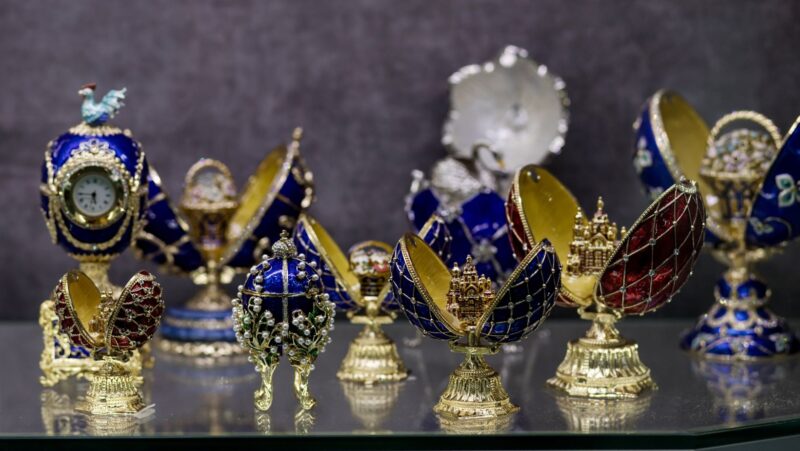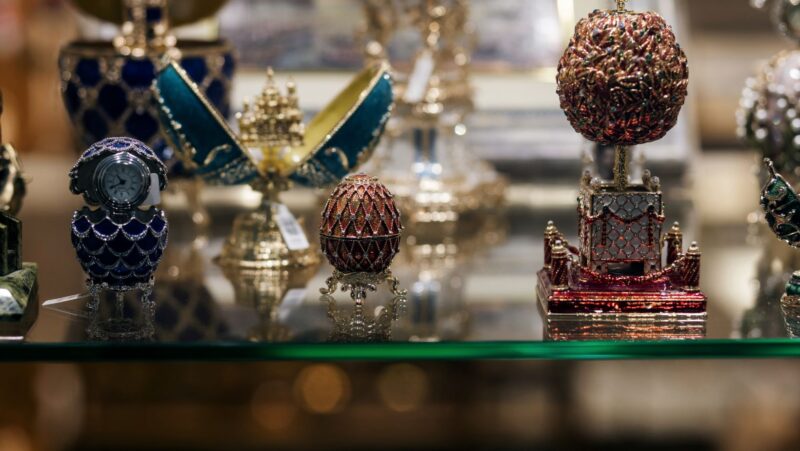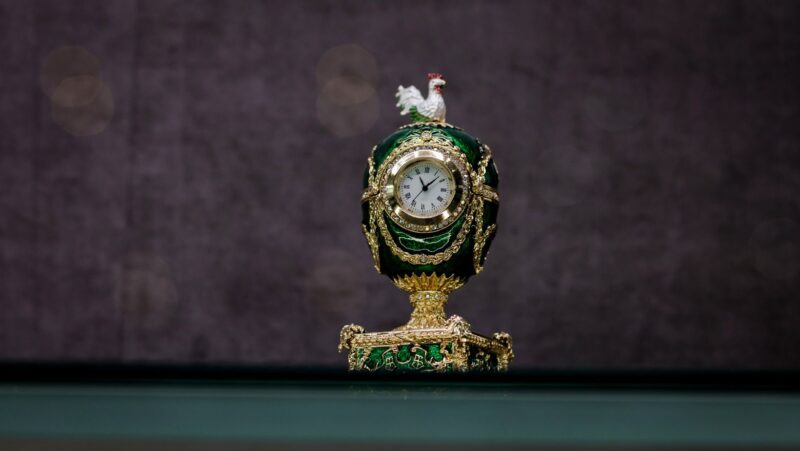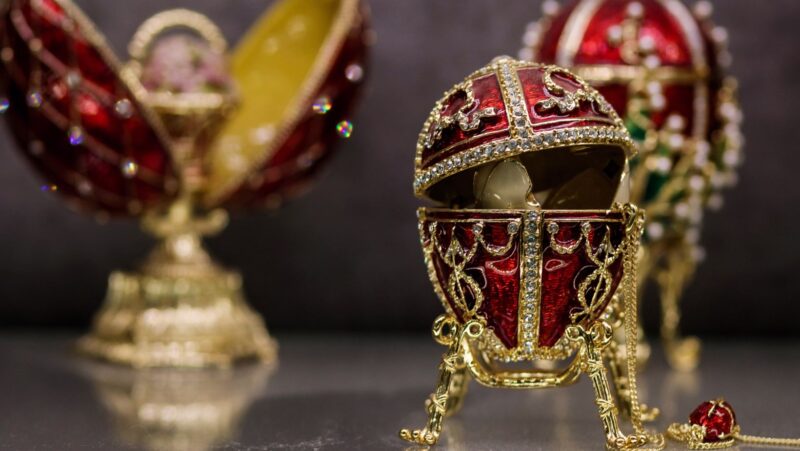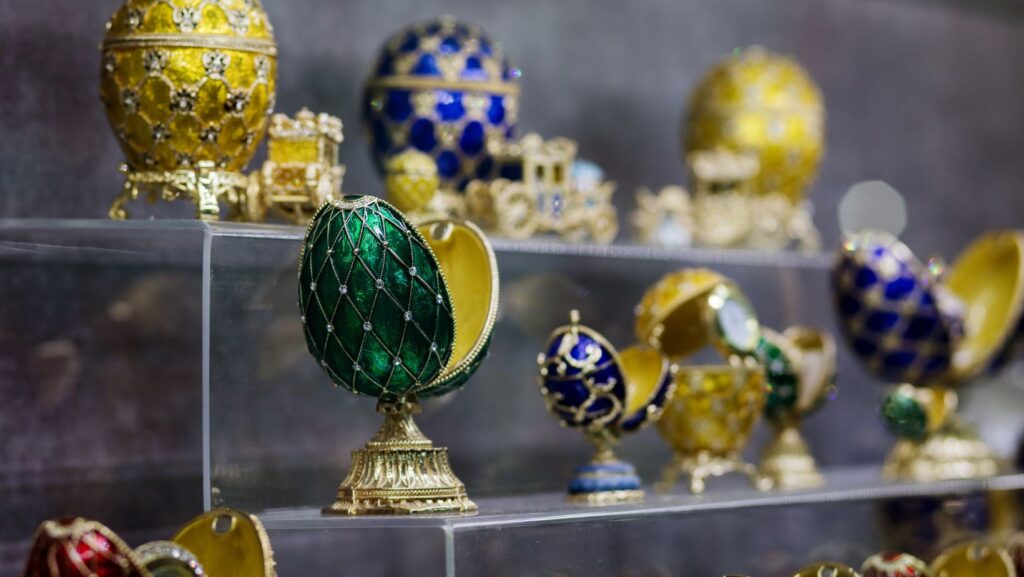
Telur Faberge Berasal Dari Negara Mana
The mesmerizing Telur Faberge eggs have captivated art enthusiasts and collectors for generations with their exquisite craftsmanship and opulent design. These unique treasures, also known as Faberge eggs, originated from the House of Faberge in Russia during the late 19th century under the skillful guidance of renowned jeweler Peter Carl Faberge.
Born in 1846, Peter Carl Faberge inherited his father’s jewelry business in St. Petersburg, Russia. He quickly became known for his exceptional talent and creativity in crafting extraordinary pieces. However, it was his collaboration with Emperor Alexander III that would pave the way for the creation of the iconic Telur Faberge eggs.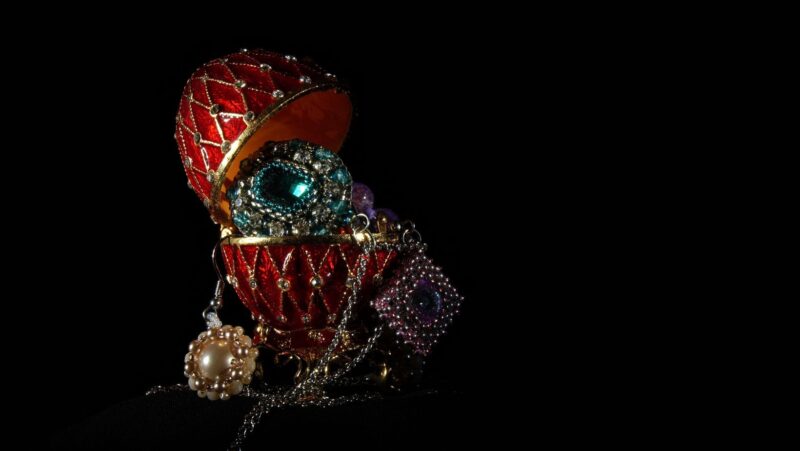
Emperor Alexander III, a patron of the arts, commissioned the first Faberge egg as an extravagant Easter gift for his wife, Empress Maria Feodorovna, in 1885. This masterpiece, known as the Hen Egg, was made of gold and white enamel, and it concealed a golden yolk containing a tiny diamond hen and a miniature replica of the imperial crown. The Empress was so delighted with the gift that the tradition of giving Faberge eggs as Easter presents to the Russian imperial family was established.
The Telur Faberge eggs soon gained international recognition for their impeccable artistry and exquisite materials. Each egg was meticulously handcrafted by skilled artisans, who used techniques such as enamelwork, gemstone setting, and goldsmithing to create these unparalleled marvels. The eggs featured a wide array of designs, from graceful flowers to elaborate palaces, and were adorned with precious gemstones and intricate details.
The artistry and beauty of the Telur Faberge Berasal Dari Negara Mana represented the height of luxury and became symbols of the Russian imperial family’s wealth and grandeur. They were displayed in the royal palaces and admired by nobility and dignitaries from around the world. Sadly, the House of Faberge was forced to close following the Russian Revolution in 1917, leading to the dispersal of many of these magnificent creations.
The House of Faberge: A Russian Legacy
The House of Faberge holds a significant place in the history of fine jewelry and craftsmanship. Founded in 1842 by Gustav Faberge, the company quickly gained recognition for its exceptional creations. However, it was Peter Carl Faberge, Gustav’s son, who truly elevated the name of Faberge to unprecedented heights.
Born in 1846, Peter Carl Faberge took over the family business in 1882 and became the mastermind behind the renowned Faberge eggs. These eggs were a testament to his exceptional talent and innovative approach to jewelry design. Under his leadership, the House of Faberge became closely associated with the Russian imperial family.
The first Faberge egg, known as the Hen Egg, was commissioned by Emperor Alexander III in 1885 as an Easter gift for his wife, Empress Maria Feodorovna. This exquisite creation was made of gold and white enamel, and it held a surprise inside—a golden yolk with a diamond hen and a miniature replica of the imperial crown. This gift marked the beginning of a tradition in which Faberge eggs were presented to the Russian imperial family as Easter gifts.
The exquisite craftsmanship and attention to detail displayed in each Faberge egg captured the hearts of the Russian imperial family and the world. The Telur Faberge Berasal Dari Negara Mana, as they are sometimes called, were meticulously handcrafted by skilled artisans using a variety of techniques, including enamelwork, gemstone setting, and goldsmithing. These eggs featured intricate designs and were embellished with precious gemstones, pearls, and other opulent materials.
Unfortunately, the House of Faberge met an untimely end with the Russian Revolution in 1917. As political upheaval swept through the country, the company was forced to close its doors, leading to the dispersal of many of its magnificent creations. Today, these precious works of art are highly sought after by collectors and museums worldwide.
The legacy of the House of Faberge lives on, not only through the surviving Telur Faberge eggs but also through the influence it has had on the world of jewelry design. The name Faberge continues to be synonymous with craftsmanship, opulence, and innovation, reminding us of the extraordinary talent of Peter Carl Faberge and the artistic heritage he left behind.
Meticulous Craftsmanship: Creating Telur Faberge Eggs
Telur Faberge eggs are known for their exquisite beauty and impeccable craftsmanship. Each egg is a true work of art, meticulously handcrafted by skilled artisans using a variety of techniques. From the intricate enamelwork to the careful gemstone setting, every detail is carefully considered to create a masterpiece.
One of the key techniques used in the creation of Telur Faberge Berasal Dari Negara Mana is enamelwork. Enamel is a material made from powdered glass that is fused to a metal surface using heat. Skilled artisans would meticulously apply layers of vibrant colored enamel to create intricate designs and patterns on the eggs. This technique required precision and patience, as each layer of enamel had to be fired and cooled before the next layer could be applied.
In addition to enamelwork, gemstone setting played a significant role in the creation of Telur Faberge eggs. The eggs were adorned with a wide array of precious gemstones, including diamonds, rubies, emeralds, and sapphires. Skilled gemstone setters would carefully position and secure each gemstone, ensuring that they enhanced the overall design of the egg. The combination of enamelwork and gemstone setting created a stunning display of color and sparkle.
Goldsmithing was another important technique used in the creation of Telur Faberge eggs. The eggs were crafted from precious metals such as gold and silver, which provided a luxurious and durable base for the intricate designs. Skilled goldsmiths would carefully shape and mold the metal, adding texture, filigree, and other decorative elements. The result was a breathtaking combination of precious metals and intricate detailing.
The meticulous craftsmanship displayed in the creation of Telur Faberge eggs is a testament to the skill and artistry of the House of Faberge. Each egg was created with the utmost care and attention to detail, resulting in a truly magnificent piece of art. The legacy of these eggs continues to inspire and awe people around the world, reminding us of the extraordinary talent of the artisans who brought them to life.
Symbol of Wealth and Grandeur: Telur Faberge Eggs And The Russian Imperial Family
The Telur Faberge Berasal Dari Negara Mana and became a symbol of wealth and grandeur, particularly associated with the Russian Imperial Family. These magnificent eggs were commissioned as extravagant gifts to be presented during the Easter celebration.
The House of Faberge, under the masterful direction of Peter Carl Faberge, crafted these opulent creations. In 1885, Emperor Alexander III commissioned the first Faberge egg, known as the Hen Egg, as a special Easter gift for his beloved wife, Empress Maria Feodorovna. This marked the beginning of a long-standing tradition in which the Russian imperial family received Faberge eggs as cherished Easter gifts.
Through their impeccable artistry and exquisite materials, the Telur Faberge eggs gained international recognition. Each egg was meticulously handcrafted by skilled artisans, utilizing techniques such as enamelwork, gemstone setting, and goldsmithing. The eggs showcased a remarkable combination of intricate detailing, vibrant colors, and precious materials, reflecting the highest level of craftsmanship.
These breathtaking creations captured the essence of luxury and decadence, attracting attention not only from the Russian imperial family but also from the international elite. The Telur Faberge Berasal Dari Negara Mana were a testament to the opulence, refinement, and wealth of the Russian Empire.
Moreover, the Faberge eggs served as symbols of the close relationship between Peter Carl Faberge and the Russian Imperial Family. They were a testament to the trust and appreciation the imperial family bestowed upon Faberge and his extraordinary talent. Each egg was created with the utmost care and attention to detail, resulting in a truly magnificent piece of art.
The Telur Faberge Berasal Dari Negara Mana continues to captivate and inspire people around the world. Today, these eggs are revered as priceless treasures, reminders of a bygone era of elegance and extravagance. Their exquisite beauty and historical significance serve as a lasting tribute to the skill and artistry of the House of Faberge.
Unveiling The Surprises: Hidden Treasures Within Telur Faberge Eggs
The Telur Faberge eggs are not only stunning works of art but also hide unexpected surprises within their intricate designs. Each egg contains small treasures or miniature objects concealed within them, adding an element of intrigue and fascination to these already extraordinary pieces. The surprises hidden within the Faberge eggs further exemplify the craftsmanship and attention to detail that went into their creation.
The surprises hidden within Telur Faberge eggs not only serve as delightful discoveries for their recipients but also demonstrate the skill and innovation of the artisans who crafted them. The attention to detail and the incorporation of hidden treasures reflect the commitment to excellence that the House of Faberge was known for.
As the legacy of the Telur Faberge eggs continues to captivate and inspire, these hidden surprises remind us of the lasting impact and ingenuity that these masterpieces hold. Even though these eggs were created over a century ago, they still fascinate and enchant individuals from all walks of life, perpetuating the allure and mystique of these remarkable works of art.
Telur Faberge eggs continue to be highly coveted and celebrated for their historical significance and artistic value. They serve as a testament to the enduring legacy of the House of Faberge and their contribution to the world of luxury and craftsmanship.

